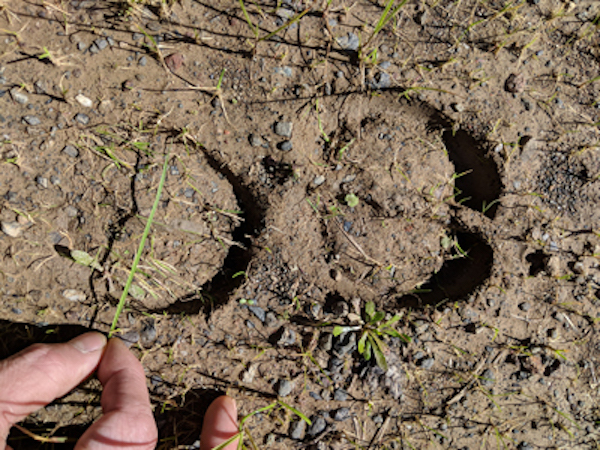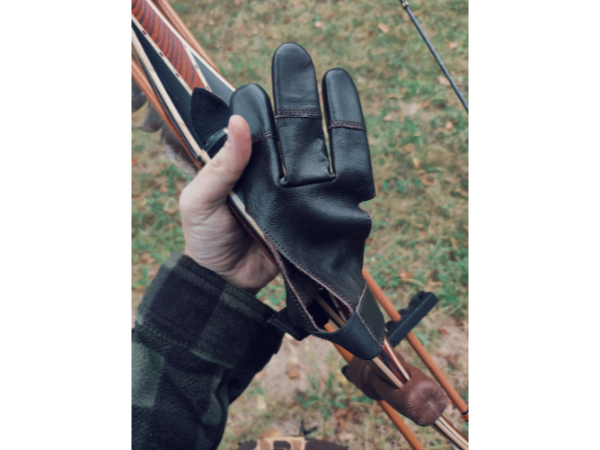There are lots of hypotheses on how to determine the sex of a deer or elk from its footprints. The following technique was shown to me by my tracking mentors, and I have tested it on hundreds of deer, elk, hog, and a few bighorn sheep trails. When I encountered the trail of an ungulate fresh enough to follow, I would make an educated guess as to the animal’s sex. Then I would follow the trail and find out if I was right by seeing the animal. It works nearly all the time. The exceptions are young bucks and big does/cows/sows/ewes. Often mature buck/bull/boar/ram tracks are obvious from their size alone. However, sometimes a more detailed look is required.
First, find a set of tracks where the front and hind foot are clear, not overlapping, and there is no unusual movement in the track (deeply splayed prints, slipping spoor, running animal). Second, find a straight grass stem or twig. Third, measure across the width of the front foot approximately in the middle of the track and hold the stem between your fingers so as to mark the width of the track. Now compare that width to the hind foot at the same halfway point. Ungulates with a proportionately wider front foot are more likely to be male, whereas those with similar dimension front and hind feet are more likely to be female animals.
In the accompanying picture I am holding the grass stem across the hind foot track with my fingers marking the width of the front foot. You can see a ¼” extra width of the front foot, indicating this track is from a bull elk. Often, behavior and size alone are enough to distinguish the sex of an animal’s trail, but this technique provides another useful tool for the detective hunter.







I was always told that if the front tracks are closer together than the back tracks, it was a doe (left to right ). Wider pelvis being necessary for the birth canal.
Hey Mike. I’ve heard this hypothesis as well, that the hind feet of doe tracks will be wider than those of a buck. I have not been able to confirm or refute it. I usually rely on general size and shape first, then behavior, and lastly a comparison of the front and hind tracks (as described in the tip above) to ID the sex. I’d say if you’ve heard of a technique (including one’s I’ve provided) , then test it for yourself and see if it works. There are a lot of myths about tracking and wildlife in general, and I try to prove or disprove everything to myself before incorporating it into my arsenal. Good luck and let us know what you find out.
Preston
Good valid information. With all four legged mammals the front feet are larger, carrying the heavier end of the animal. Find a straight set of walking speed tracks of a mature ungulate like deer or elk. A males’ second, smaller rear track will register (overlap) the larger front track to the center line of the tracks. A females’ second smaller rear track will register over the larger first track to the outside of the line of tracks.
Sorry, but this is a myth that you can judge a deers sex by it’s hoof print with any certainty.
At least try it.
If you ever google Preston’s name, he’s got one of the highest certifications you can get as a tracker through the largest North American tracking organization, CyberTracker. (A goofy name) Which means he has put in the dirt time.
So, test the technique to see if it bears out. Speaking of bears, Preston has written a fantastic book about the American black bear, which was reviewed in this very magazine, if I remember correctly.
Now, if you said I could not tell the sex of an elk by its track, I would yell, “How long have you been spying on me?”